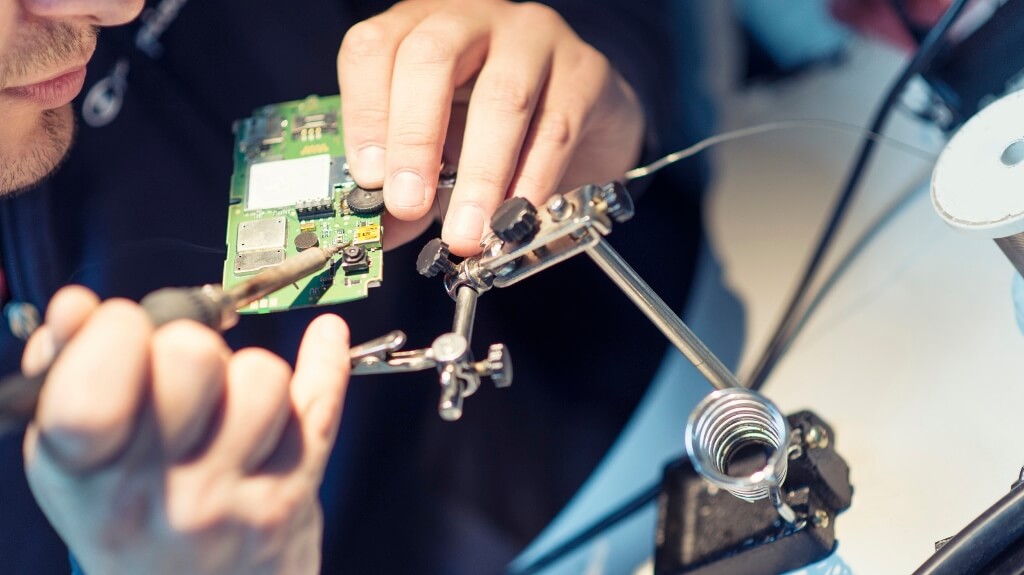A World Of Possibility For Businesses Doubling Down On R&D
The power of R&D is in the coming together of ideas, from the graduate to the seasoned architect.

Gone are the days where business innovation was considered the preserve only of the C-suite and super geeks. Innovation was once considered to be top secret organisational IP and only dispensed on a very much need-to-know basis. But in the era of inclusivity, we have seen it become devolved.
Trade secrets still exist, of course, but in gradually opening up and expanding channels of communication through technology and travel and changing business cultures, ideas are being spawned from all company corners. In fact, it’s a hugely influential factor in the products hitting the market today.
A cycle of self-betterment
Simply building better products and services is no longer sufficient. Businesses are expected to link ideas, information, technologies, and services while maintaining a customer-first and business-first perspective. This is putting huge onus on innovation and the need to create products and services to match these expectations, but also continually better them in a cycle of self-improvement. So much so that we are living through a period of R&D genesis.
22% of global executives say that not having enough great ideas is one of the biggest obstacles to innovation ROI.. That’s almost one in four businesses crying out for sources of inspiration. But anyone can have an idea. The challenge for businesses is to unlock it, weave it into R&D and produce something for mainstream consumption. In fact, in one of our own studies, Professor Feng LI, Chair of Information Management at Bayes Business School at City, University of London, Innovating in the Exponential Economy, revealed that an inability to turn ideas into new products, services and strategies, at pace, continues to put organisations at risk of failure.
Challenging the status quo
If asked to give the best example of modern innovation, most people would point to Steve Jobs. The iPhone is the poster boy for possibility simply because it was so different, brilliantly simple, and now so ubiquitous. There’s also recency bias, of course. But because it set the bar so high, it’s easy to be blinded by the sleek finish and ignore equally impressive developments.
Businesses have always had to challenge the status quo to get ahead. It’s why the most successful at doing so are so revered - Ford, Buffett, Bezos and Musk to name a few. This drive for improvement is why we’re seeing vast investment into R&D to get ahead and stay there.
At VMware, we put around 22% of revenue back into R&D and have always been and always hope to be a disruptive, sustainable innovator, and co-innovator with our partners. But to turn an idea into something tangible, it needs an environment to thrive.
No idea is a bad idea
Our own annual RADIO (Research & Development Innovation Offsite) event is a good example - most technology companies have something similar these days. Led by our CTO, Kit Colbert and his team (OCTO), it’s where engineers at all levels within VMware spitball ideas on a new app, a new work-around, an enhanced service or a better way to build products.
Throughout the year, any of our employees can submit an idea to be showcased at the event and considered for adoption. Internal hackathon sessions enable people to collaborate around a theme on features, proof-of-concepts, hacks, or new workflows, and build a culture of creativity and enthusiasm for our products.
By creating an environment for inspiration to thrive, voices can be heard, and ideas brought to life. Whether it is from customer requests or university partnerships, capturing and acting on brilliant ideas has become a major metric for business success.
Pushing the boundaries with sustainability
A good example is what we’re seeing in sustainability. Never has the adage, ‘necessity is the mother of invention’ been more apt. The world is turning to technological innovation to blow the winds of change.
Electric vehicles grab the headlines here but there is some incredible stuff going on if you look beyond the batteries. For example, air pollution can now be transformed into jewellery, windows can generate solar energy and automatic bins are (slowly) cleaning the oceans. The point being that building more sustainable products and operations is at the heart of innovation today, and this must lead to an outcome and output because it has to.
Driving real outcomes
Research and Development is the DNA of a company’s existence, but it is not a job for one person or a team - its power is in the coming together of ideas, from the graduate to the seasoned architect.
Some of our best ideas have come from our technical folks in our Global Field, working with customers directly on real outcomes and driving innovation back into the heart of our R&D. Nobody needs to reinvent the wheel but simply by being open and contributing to the debate, influence can be exerted, and progress made.
Joe Baguley is VP & CTO of VMware.
Thanks for signing up to Minutehack alerts.
Brilliant editorials heading your way soon.
Okay, Thanks!

